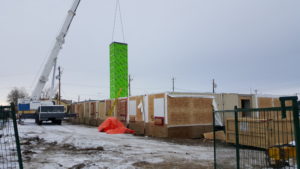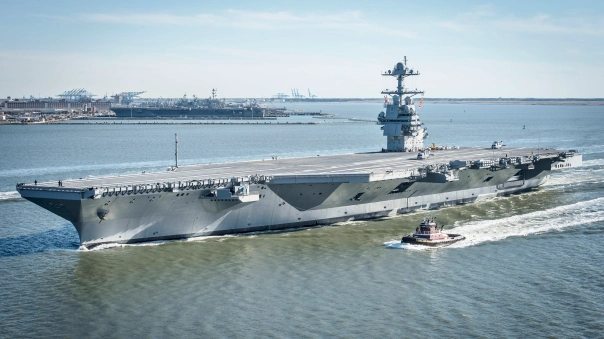Trapped During Elevator Repairs
December 13, 2017Fireman Key – Please Use the Fireman’s Key (Not an Ax)
January 22, 2018Weather Halts Construction – But Not Modular

Weather stops construction. We have all seen the headlines: The winter weather this year, and nearly every year, puts a damper on the construction industry and new elevator installation. Work vehicles get stuck in the snow, batteries are drained dead in equipment, and materials often have a negative reaction to sub-zero temperatures. If you are having a new stick built elevator installed, it is important to know about these delays.
Breaking Up is Easy to do in Freezing Temps
Concrete is one of the materials that suffers most during construction in winter weather and it’s also one of the most common ways people build hoistways or shafts. Pouring concrete is delayed anytime it gets too cold, according to Darrell Bailey from Morton Building, a firm that specializes in metal buildings of all sorts. He has seen people try to pour concrete in bad weather with horrible results. He said, “It will freeze and bust. You just can’t pour on frozen ground,” and “that means you are stuck until things thaw out.” There are some actions that can be taken to speed up the process, such as trying to warm the ground with concrete blankets or black plastic for a few days before the pour, but the results are hard to predict.
Another option is changing the mixture by adding extra concrete mix to reduce the amount of water or by adding a chemical accelerator such as calcium chloride or other heating agent. If those procedures allow for the job to continue, you still have additional work to do and several issues to work around. The area must be protected and cured for a minimum of 3 – 7 days and you can’t move anything heavy on it or put loads on it at all. You must use blankets, black plastic, or another insulating material as it cures and sometimes you’ll have to heat it from the inside and out. But there are no guarantees that these procedures will work and, if you push it too far, the surface of the concrete can freeze and pop off and it has the potential to NEVER be as durable as if it were poured in the proper temperature.
With this most recent spate of freezing temps, most of the nation’s construction came to a screeching halt. After all, you can’t even lay CMU (concrete blocks) that has either a temperature below 20°F or contains frozen moisture, visible ice, or snow on their surface. That stops a lot of building, especially elevator hoistways.
Cold – No Problem in a Factory
But little of this applies in the modular building industry because the bulk of the work is completed inside of a factory away from inclement weather. With modular elevators for instance we manufacture the hoistway out of tough, durable steel and then wrap it in glass-mat sheeting on the exterior and drywall on the interior for a one or two hour fire-rating. We do not need a CMU or concrete elevator shaft to be completed. All the while it is snowing and freezing outside, the hoistway is being built inside where it is unaffected by freezing cold temperatures. As the hoistway is being constructed, the elevator components are also being manufactured in our factory or being assembled. At the end of the assembly-line you have an elevator and hoistway all in one piece, fully assembled and ready to be delivered, swung into place, and installed. The install takes less than a week and our manufacturing lead time on standard models is eight weeks plus time to ship. Keep in mind these are quality commercial elevators that are just like any other; once they are installed, they run exactly the same as any stick-built unit, but they just take a lot less time to install and they aren’t stopped by a little cold weather, snow, or ice.
Fiddlesticks
The developer, building owner or designer of the project containing an old stick built elevator will just simply have to wait for the thaw to finish the job, where the modular elevator has been completed and will be in place and ready to go in a matter of weeks. Keep this in mind when you are considering a new elevator for a retrofit project or new construction.



